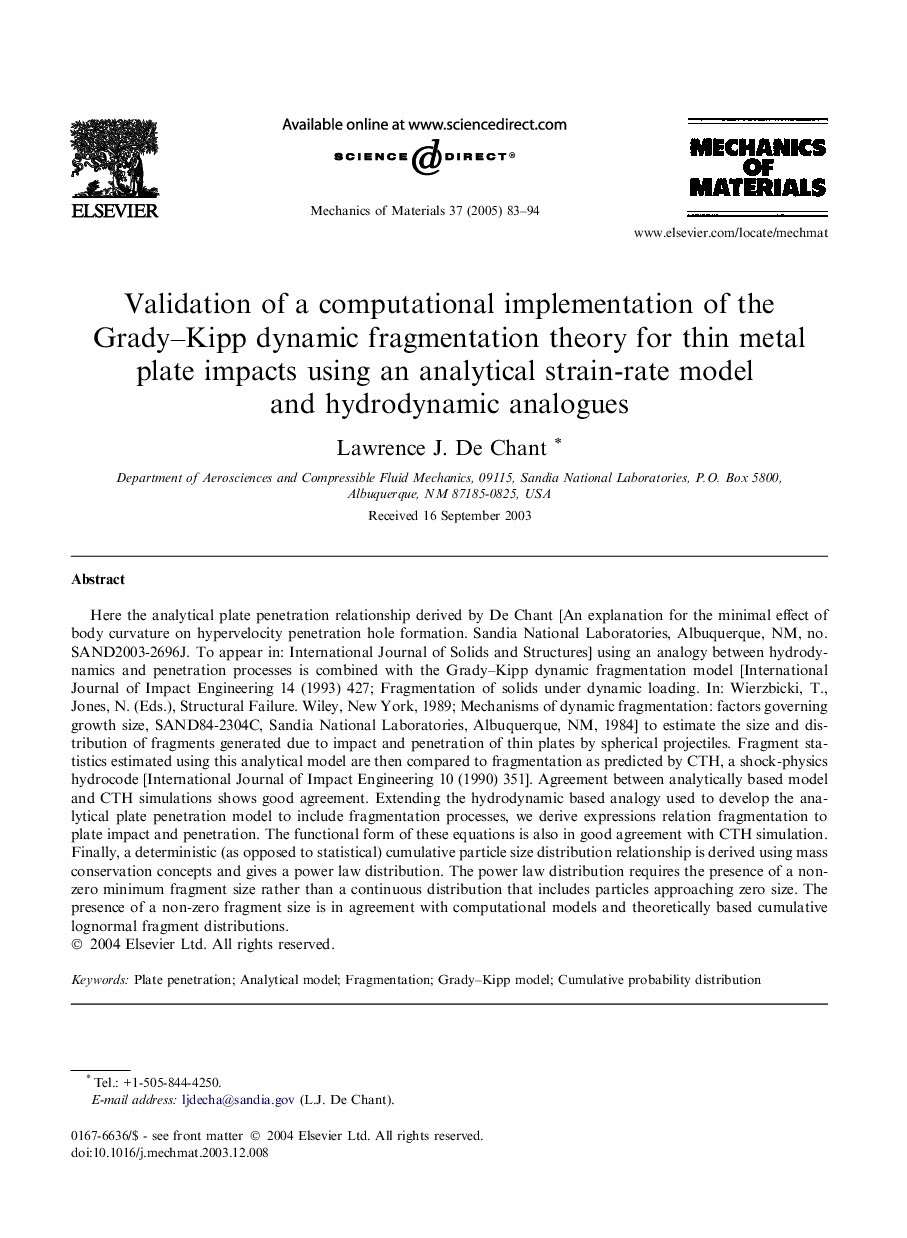| Article ID | Journal | Published Year | Pages | File Type |
|---|---|---|---|---|
| 9711679 | Mechanics of Materials | 2005 | 12 Pages |
Abstract
Here the analytical plate penetration relationship derived by De Chant [An explanation for the minimal effect of body curvature on hypervelocity penetration hole formation. Sandia National Laboratories, Albuquerque, NM, no. SAND2003-2696J. To appear in: International Journal of Solids and Structures] using an analogy between hydrodynamics and penetration processes is combined with the Grady-Kipp dynamic fragmentation model [International Journal of Impact Engineering 14 (1993) 427; Fragmentation of solids under dynamic loading. In: Wierzbicki, T., Jones, N. (Eds.), Structural Failure. Wiley, New York, 1989; Mechanisms of dynamic fragmentation: factors governing growth size, SAND84-2304C, Sandia National Laboratories, Albuquerque, NM, 1984] to estimate the size and distribution of fragments generated due to impact and penetration of thin plates by spherical projectiles. Fragment statistics estimated using this analytical model are then compared to fragmentation as predicted by CTH, a shock-physics hydrocode [International Journal of Impact Engineering 10 (1990) 351]. Agreement between analytically based model and CTH simulations shows good agreement. Extending the hydrodynamic based analogy used to develop the analytical plate penetration model to include fragmentation processes, we derive expressions relation fragmentation to plate impact and penetration. The functional form of these equations is also in good agreement with CTH simulation. Finally, a deterministic (as opposed to statistical) cumulative particle size distribution relationship is derived using mass conservation concepts and gives a power law distribution. The power law distribution requires the presence of a non-zero minimum fragment size rather than a continuous distribution that includes particles approaching zero size. The presence of a non-zero fragment size is in agreement with computational models and theoretically based cumulative lognormal fragment distributions.
Keywords
Related Topics
Physical Sciences and Engineering
Engineering
Mechanical Engineering
Authors
Lawrence J. De Chant,
